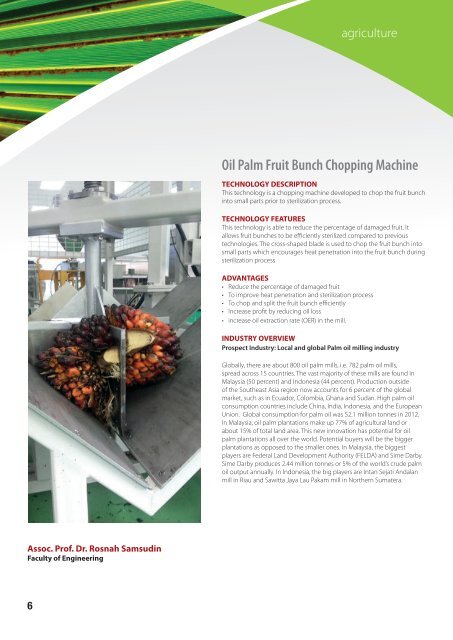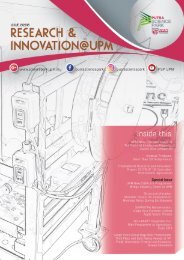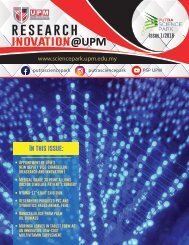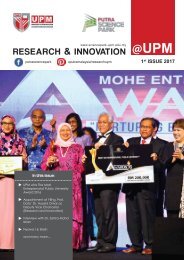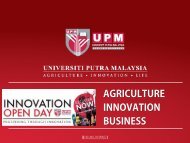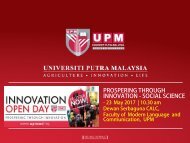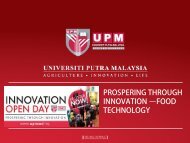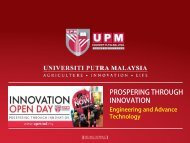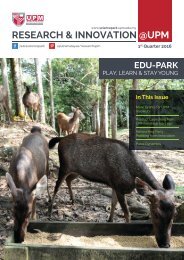Innovation directory 4th edition
You also want an ePaper? Increase the reach of your titles
YUMPU automatically turns print PDFs into web optimized ePapers that Google loves.
agriculture<br />
Oil Palm Fruit Bunch Chopping Machine<br />
TECHNOLOGY DESCRIPTION<br />
This technology is a chopping machine developed to chop the fruit bunch<br />
into small parts prior to sterilization process.<br />
TECHNOLOGY FEATURES<br />
This technology is able to reduce the percentage of damaged fruit. It<br />
allows fruit bunches to be efficiently sterilized compared to previous<br />
technologies. The cross-shaped blade is used to chop the fruit bunch into<br />
small parts which encourages heat penetration into the fruit bunch during<br />
sterilization process<br />
ADVANTAGES<br />
• Reduce the percentage of damaged fruit<br />
• To improve heat penetration and sterilization process<br />
• To chop and split the fruit bunch efficiently<br />
• Increase profit by reducing oil loss<br />
• increase oil extraction rate (OER) in the mill.<br />
INDUSTRY OVERVIEW<br />
Prospect Industry: Local and global Palm oil milling industry<br />
Globally, there are about 800 oil palm mills, i.e. 782 palm oil mills,<br />
spread across 15 countries. The vast majority of these mills are found in<br />
Malaysia (50 percent) and Indonesia (44 percent). Production outside<br />
of the Southeast Asia region now accounts for 6 percent of the global<br />
market, such as in Ecuador, Colombia, Ghana and Sudan. High palm oil<br />
consumption countries include China, India, Indonesia, and the European<br />
Union. Global consumption for palm oil was 52.1 million tonnes in 2012.<br />
In Malaysia, oil palm plantations make up 77% of agricultural land or<br />
about 15% of total land area. This new innovation has potential for oil<br />
palm plantations all over the world. Potential buyers will be the bigger<br />
plantations as opposed to the smaller ones. In Malaysia, the biggest<br />
players are Federal Land Development Authority (FELDA) and Sime Darby.<br />
Sime Darby produces 2.44 million tonnes or 5% of the world’s crude palm<br />
oil output annually. In Indonesia, the big players are Intan Sejati Andalan<br />
mill in Riau and Sawitta Jaya Lau Pakam mill in Northern Sumatera.<br />
Assoc. Prof. Dr. Rosnah Samsudin<br />
Faculty of Engineering<br />
6


